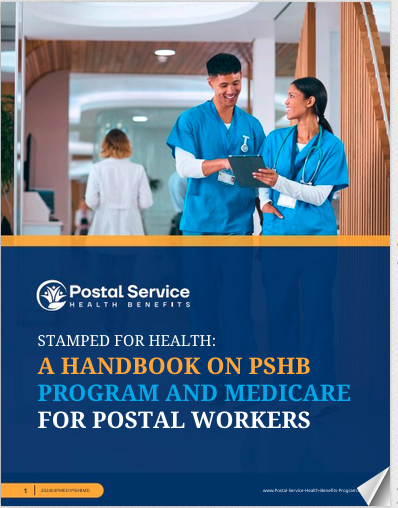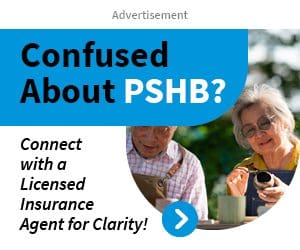Key Takeaways
- Enrolling in the Postal Service Health Benefits (PSHB) program by 2025 is crucial for USPS employees to secure ongoing health coverage.
- Missing the PSHB enrollment deadline can result in significant loss of benefits and coverage options, impacting long-term healthcare security.
Why It’s Critical to Enroll in PSHB by 2025 and What Happens If You Don’t
With significant changes on the horizon for the health benefits landscape of United States Postal Service (USPS) employees, understanding the importance of enrolling in the Postal Service Health Benefits (PSHB) program by 2025 is crucial. This new program is designed to replace the existing Federal Employees Health Benefits (FEHB) program specifically for USPS employees and retirees. The 2025 deadline marks a pivotal point, beyond which failure to enroll could lead to adverse effects on your health coverage. This article will explore why timely enrollment in the PSHB program is critical, what happens if you miss the deadline, and the potential consequences of not securing your health benefits under the new system.
The Shift from FEHB to PSHB: What You Need to Know
The transition from the Federal Employees Health Benefits (FEHB) program to the Postal Service Health Benefits (PSHB) program is part of a larger reform effort aimed at creating a separate and sustainable health benefits system for USPS employees. As of 2025, USPS employees and retirees will no longer be eligible to remain in the FEHB program; instead, they must enroll in the PSHB program to continue receiving health benefits. This transition is not merely a change in the name but involves different coverage options, potential cost adjustments, and specific eligibility requirements that need careful consideration.
The PSHB program is designed to better align with the unique needs of USPS employees and the organization’s long-term financial health. One of the most significant changes involves the integration with Medicare for retirees. Unlike the FEHB, the PSHB mandates that retirees must enroll in Medicare Part B as a condition for participation in the program. This integration is intended to reduce overall costs and ensure more comprehensive coverage for retirees. However, this also means that understanding the enrollment process and meeting the deadlines are more critical than ever.
Why Timely Enrollment in PSHB is Essential
Enrolling in the PSHB program by the 2025 deadline is essential for several reasons, most notably the continuity of health coverage. Missing this deadline could lead to losing your current health insurance, which could leave you and your family without crucial health benefits.
- Continuity of Coverage: Failure to enroll in PSHB by the deadline means losing your existing FEHB coverage. USPS employees who do not transition to the new system will be left without employer-sponsored health insurance, which can be especially risky given the rising costs of healthcare.
- Medicare Integration for Retirees: For retirees, enrolling in PSHB is not just about maintaining current coverage—it’s about integrating your benefits with Medicare. If you are eligible for Medicare and fail to enroll in PSHB, you could miss out on the comprehensive coverage provided by the combination of PSHB and Medicare Part B. This integration is designed to offer better financial protection and lower out-of-pocket costs in the long run.
- Penalty for Late Enrollment: Similar to other health insurance programs, missing the enrollment deadline could result in penalties or higher premiums if you decide to enroll later. These penalties can add up over time, making it financially burdensome to delay enrollment.
What Happens If You Don’t Enroll by 2025?
Missing the 2025 deadline for PSHB enrollment can have significant consequences, including the loss of health coverage and increased financial strain. Here’s what could happen:
- Loss of FEHB Coverage: USPS employees and retirees who fail to enroll in PSHB will lose their current FEHB coverage. Since PSHB is designed to replace FEHB for USPS workers, failing to transition means you would no longer have employer-sponsored health insurance.
- Limited Coverage Options: If you miss the enrollment window, your options for obtaining comparable coverage outside of PSHB may be limited and more expensive. Private health insurance can be costly, and the loss of employer-sponsored benefits might mean having to settle for less comprehensive plans.
- Increased Healthcare Costs: Without PSHB, you may face higher out-of-pocket expenses for medical care. The combination of PSHB with Medicare Part B is structured to minimize these costs, and missing out on this benefit could lead to significantly higher healthcare expenses, particularly in retirement.
- Potential Penalties: Just like other health insurance programs, if you do not enroll during the designated period, you could face penalties if you choose to enroll later. These penalties are often in the form of higher premiums, which could further strain your finances.
How to Enroll in the PSHB Program
The enrollment process for PSHB is expected to be straightforward, but it requires attention to detail to ensure all deadlines are met. USPS employees and retirees will need to actively select a PSHB plan during the open enrollment period, which will be announced closer to the 2025 deadline.
- Review Your Options: Begin by reviewing the PSHB plans available to you. This will help you understand the differences between the new options and your current FEHB plan. Pay particular attention to the integration with Medicare if you are a retiree, as this will affect your overall coverage and costs.
- Understand the Medicare Requirement: If you are a retiree, enrolling in Medicare Part B is mandatory for participation in PSHB. Ensure that you are aware of the Medicare enrollment period to avoid any gaps in coverage.
- Submit Your Enrollment: During the open enrollment period, make sure to submit your PSHB enrollment. Failure to do so will result in the loss of your current health benefits. The USPS will provide detailed instructions on how to complete this process, but it’s crucial to act within the specified timeframe.
- Seek Assistance if Needed: If you are unsure about which PSHB plan to choose or have questions about the Medicare integration, seek help from a licensed insurance agent or a USPS benefits advisor. They can provide guidance tailored to your specific situation.
Potential Challenges and Considerations
The transition to PSHB, while necessary, may present some challenges. Understanding these potential obstacles can help you navigate the process more effectively.
- Plan Differences: The PSHB plans may differ from the FEHB plans in terms of coverage and costs. Take the time to understand these differences to make an informed decision about your health benefits.
- Impact on Dependents: If you have dependents covered under your current FEHB plan, ensure that they are also covered under the new PSHB plan. The transition may require you to make new selections for dependent coverage, so it’s essential to verify these details during the enrollment process.
- Medicare Coordination: For retirees, the coordination between PSHB and Medicare may be complex. It’s important to understand how these two programs will work together to provide comprehensive coverage. This may involve reviewing your Medicare options and ensuring that you enroll in Part B to avoid any penalties or gaps in coverage.
Preparing for the 2025 Deadline
As the 2025 deadline approaches, it’s crucial to start preparing now. Here are some steps you can take to ensure a smooth transition to PSHB:
- Stay Informed: Keep up with any updates from USPS regarding the PSHB program. Understanding the latest information will help you make informed decisions about your health benefits.
- Review Your Current Benefits: Take the time to review your current FEHB coverage and compare it with the PSHB options. This will help you determine which plan best meets your needs.
- Consult with a Benefits Advisor: If you have questions or concerns about the transition, consult with a USPS benefits advisor or a licensed insurance agent. They can provide valuable insights and help you navigate the enrollment process.
- Mark Your Calendar: Don’t wait until the last minute to enroll in PSHB. Mark the enrollment period on your calendar and set reminders to ensure you meet all deadlines.
Securing Your Future Health Coverage
Enrolling in the PSHB program by 2025 is not just a bureaucratic task; it’s a critical step in securing your future health coverage. Missing the deadline could leave you without employer-sponsored health insurance, resulting in higher costs and reduced coverage options. By understanding the importance of this transition and taking the necessary steps to enroll, you can protect your health and financial well-being in the years to come.
Contact Information:
Email: [email protected]
Phone: 14352602264






